Matador Network's Blog, page 1140
March 18, 2019
Repurposed churches in former USSR
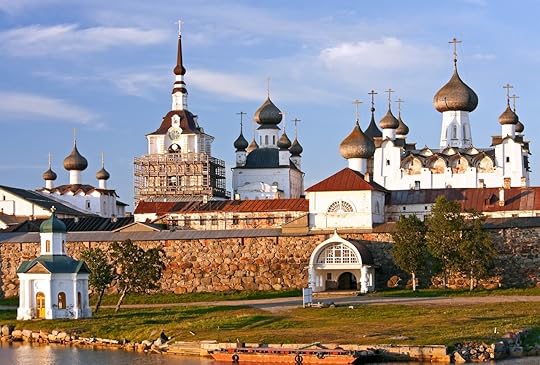
Although Christianity is experiencing a comeback under Putin’s Russia, the relationship between the Kremlin and the Church hasn’t always been trouble-free. Following Karl Marx’s idea that religion is the “opium of the people,” the Soviet Union set out to eradicate organized faith entirely, with the Russian Orthodox Church being its primary target. In the attempt to convert the whole nation into atheism, Lenin and his successors persecuted believers and most members of the clergy, sending Christians to labor camps, removed theology from education, and confiscated the Church’s property.
As reported by The Moscow Times, by 1939, of the 50,000 parishes and cathedrals that existed under the Tsar’s government, only between 200 and 300 remained open. Of the many churches that were taken, including world-famous St. Basil’s Cathedral in Moscow‘s Red Square, a significant number were destroyed while others were desacralized and converted into something entirely different. Most of the repurposed parishes were ultimately returned to the Russian Orthodox Church after the fall of the Soviet Union; however, some still operate as museums and cultural centers.
1. Space Museum, Pereyaslav-Khmelnitsky, Ukraine

Photo: tetiana_u/Shutterstock
Located in the museum city of Pereyaslav-Khmelnitsky, about an hour away from the Ukrainian capital, is a 19th-century Orthodox church that was converted into the Space Museum in the 1970s. Built near Kiev in 1891, the parish was moved in the 1960s to its current location before becoming a temple dedicated to the new obsession of the time: the conquest of the cosmos. The museum houses items such as a parachute and a helmet belonging to Yuri Gagarin, the first man in space, and a lunar rover, plus an abundance of propaganda material meant to attract the attention of the masses toward science rather than faith.
2. Museum of Atheism/Kazan Cathedral of Saint Petersburg, Russia

Photo: Marco Rubino/Shutterstock
As for many of the churches that were repurposed during Soviet rule, the majestic Kazan Cathedral, situated in the heart of Saint Petersburg on Nevsky Prospect, has gone back to serve its original function as a place of worship. In January 1932, however, the cathedral was shut down by the government to open again 10 months later with the new label of Museum of the History of Religion and Atheism, a structure dedicated entirely to the scorning of Christianity and other beliefs. The building became a tourist attraction so popular that people waited two hours in line to get in, as reported by the New York Times in 1987. It showcased Inquisition torture devices and highlighted the role of priests as collaborators of both the Nazis and the Tsars — ironic, considering that in later years the head of the Russian Orthodox Church himself was accused of being a KGB spy.
3. The Russian State Museum of the Arctic and Antarctic, Saint Petersburg, Russia

Photo: Andrey Picard/Shutterstock
Housed in the former Old Believers’ Church of St. Nicholas built between 1820 and 1838, this one-of-a-kind museum hosts the largest exhibition dedicated to the exploration and environment of the world’s polar regions, with a collection counting over 70,000 artifacts. Opened officially in 1937, the Russian State Museum of Arctic and Antarctic focuses on the discovery and development of the Northern Sea Route and the Russian research expeditions. But if history is not your thing, there are also sections devoted to the flora and fauna of the Arctic and Antarctic filled with stuffed polar bears and penguins, among other creatures.
4. The Vladimir Planetarium, Vladimir, Russia
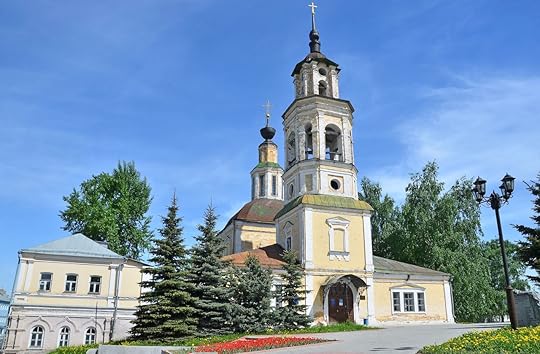
Photo: Ovchinnikova Irina/Shutterstock
Opened in 1962 inside the building of the 1761 Nikolo-Kremlevskaya Church, this small museum in the city of Vladimir in Western Russia came about when Russia was zeroing in on the exploration of outer space. Today, the Vladimir Planetarium still plays an essential role in the town’s education about the universe, offering lectures on astronomy and astronautics, as well as assisting local schools with programs related to history, geography, and ecology.
5. The Solovetsky Monastery, Solovetsky Islands, Russia

Photo: Iraqite/Shutterstock
Not all the churches confiscated by the Soviets were transformed into cultural establishments. Some, like the Solovetsky Transfiguration Monastery, founded in the early 15th century on a remote island in the White Sea, had a much darker fate, serving as a concentration camp for dissidents of the revolutions. Located on the UNESCO-listed Solovetsky Archipelago, the monastic complex is considered one of the first camps established by the communist regime.
The “Gulag Archipelago” opened in 1923 after the government took hold of the ancient fortification, and in the following 16 years, it is estimated that of the 80,000 people that were sent there only half survived. Today, a small community lives on the Great Solovetsky Island located over 900 miles north of Moscow, and it is possible to visit the monastery where monks returned in the 1990s and the museum that recalls the history of the camp.
6. Saint Anne Lutheran Church, St. Petersburg, Russia

Photo: Myskina6/Shutterstock
From choirs singing prayers to crowds moshing over punk tunes — when it comes to music, the Saint Anne Lutheran Church of Saint Petersburg has seen it all. Built on Furshtatskaya Street between 1775 and 1779, the building can hold up to 1,500 people, who over the years have entered the structure for completely different reasons. During the Bolshevik rule, the church was converted into the movie theater Spartak, while after the fall of the Soviet Union the same space was used to host rave parties, before becoming a rock club. In 2002, after being returned to the Lutheran Church to serve its original purpose, a fire heavily damaged the building, which remained abandoned for the following few years. Today the partially renovated parish works as a Christian cultural center.
7. Nizhny Novgorod Planetarium, Nizhny Novgorod, Russia

Photo: Ovchinnikova Irina/Shutterstock
The first digital planetarium in Russia was originally housed in the Alekseevskaya Church in the Annunciation Monastery of Nizhny Novgorod, between Moscow and Kazan. After 57 years, on December 5, 2005, the building was returned to the Russian Orthodox Church to restore its religious service.

Photo: Kovankin Sergey/Shutterstock
The planetarium was moved to a newly erected structure celebrating the 50th anniversary of the launch of Sputnik 1, the first artificial satellite sent into space. The new building is not as pretty but looks much more like what’s you’d expect from a planetarium. 

More like this: 7 amazing Russian churches that seem right out of a fairytale
The post 7 former USSR churches that were desacralized and repurposed appeared first on Matador Network.

Australian 12-week time-off policy

While Americans are struggling to cram all their vacation dreams into their two weeks of PTO each year, Australians — at least, those who work for this company — are planning epic three month-long trips. Ernst & Young, an accounting firm with locations all around the world, offers its Australian employees six to 12 weeks of “life leave” each year to travel, work part-time, or simply to do nothing.
The company is also introducing two new options starting on April 1. Term-time working will allow employees to work full-time during the school year, with all school holidays off (for those with children), or as an alternative, an employee can work part-time for three months.
Kate Hillman, people partner for Ernst & Young Oceania, said the policies are an effort to “address a growing demand for flexible work environments in general, not just for working parents. We’re innovating so we don’t lose these people when they pursue passions outside of work.”
Hillman also revealed that the influx of travel-minded millennials has also inspired these new policies. She says millennials are “driving demand for flexibility, as their preference for diverse and stimulating career experiences overrides traditional workplace structures and timelines.”
In addition to increasing employee satisfaction, the firm also found that more workplace flexibility caused employee engagement to rise by 11%. Hopefully, this is the beginning of a broader international trend to give employees more paid time off for travel and personal development. 
H/T: Business Insider

More like this: The 25 places you need to travel to in 2019
The post This Australian company gives employees 12 weeks of paid “life leave” every year appeared first on Matador Network.

Best doughnuts from around the world

Food isn’t, and never has been, limited by borders or boundaries. The things we eat travel as we do, flying across oceans and into the cultures and diets of their new homes, adapting along the way. But there may be no single food item that’s made its way into every corner of the world quite like the doughnut.
Fried dough has been consumed for long enough to be found as fossilized pieces at ancient Native American sites. These days, it’s everywhere in one variation or another. In fact, forms of fried dough are made on every continent on the planet. The doughnut is, rightfully, celebrated in countries around the world.
However, doughnuts didn’t start as the glazed Krispy Kremes we know and love today. While fried dough has been around for countless years, the typical American style doughnut with the hole in the middle seems to have started in the 19th century.
The rumor about how the doughnut got its hole is a shifty one. The story begins with the mother of a young seafaring captain named Gregory. She would make him batches of fried, sweetened dough for his crossings. During a particularly rough storm, Captain Gregory was eating his hole-less doughnut when he fell into the wheel of his ship. The dough was speared through the center by the wheel’s spoke, and the present-day doughnut was born. Or so the story goes. (Other newspaper reports from the time tracked down by Smithsonian Magazine point to the idea that maybe Gregory cut the hole to skimp on ingredients.)
How it happened aside, there’s no debate over the world’s obsession with the fried sweet treat. Today, the American doughnut has made its way to Australia, Cambodia, and Ireland. The best New Orleans beignets are arguably just as famous stateside as they are in France. Churros are sold out of carts in New York City’s subway stations and served at family tables in Mexico.
The doughnut, the zeppole, the sweet, cinnamony delight of the churro. It doesn’t matter what you shape it, call it, or dip, dunk, and coat it with, the doughnut is universally revered. Could it be that the universal language is not love, as The Beatles once taught us, or math as some wild academics would have us believe? The universal language very well might be the sweet dialect of locally fried dough.
It’d be a Herculean task to name every type of doughnut around the world, but these are some of the best that can be found.
1. Churro — Mexico, Spain, and parts of Latin America

Photo: SMarina/Shutterstock
Churros started on the Iberian peninsula and came to the Americas via the Spanish. Now, they can be found just about everywhere. In Spain, they’re considered a breakfast food while in Mexico you can find them at pretty much all times of the day (and often alongside liquid chocolate to dip in). Of course, the churro can’t be contained to just a couple of countries. Churros can be found throughout the US from the streets of California to the subway stations in New York City.
2. BeaverTail — Canada

Photo: naheedzzz/BeaverTails – Queues de Castor/Facebook
Canada is the most doughnut-obsessed country in North America — and the world. Canadians consume more doughnuts per capita and have more doughnut shops per capita than any other country. Some of those doughnuts are the basic ones from Tim Hortons, but others are twists on fried dough that have become a point of national pride, like the BeaverTail, which is a flat piece of fried dough (a shape that resembles a beaver’s tail) smeared with any topping you’d like.
3. Pets de nonnes — France

Photo: SEAGULL_L/Shutterstock
Pets de nonnes translates to “nun’s puffs,” which is slang for “nun’s farts.” These little farts are made with flour, butter, milk, eggs, and plenty of sugar. The dough is shaped into a ball and then fried in lard and sprinkled with powdered sugar. It’s a mystery why they’re called nun farts, but don’t think too much about it.
4. Berliner pfannkuchen — Germany

Photo: berni0004/Shutterstock
In Germany, they eat Berliner pfannkuchen, which are fried, doughnut-like pastries without a hole that are often simply called “Berliners.” These are basically just jelly doughnuts by a different name, with cream, chocolate, or fruit fillings. Just be careful when you’re eating them in Germany because it’s a far-too-common prank to fill one of the Berliners in a pile with mustard instead of something sweet.
5. Zeppole — Italy

Photo: Sabino Parente/Shutterstock
Zeppole are like filled doughnuts with the top blown off. The fried dough can be filled with custard, jam, or anything else you desire. In Italy, the filling depends on where you’re at in the country. Some areas go sweet with fillings like blended ricotta and sugar, others go savory with anchovies.
6. An-doughnut — Japan

Photo: Let Geo Create/Shutterstock
Japan is close behind Canada when it comes to doughnut consumption and doughnut shops per capita. One of the types you’ll find there is what’s called an-doughnut, which is fried dough filled with red bean paste. The most popular place to grab one is at one of the many Mister Donut locations, which have been serving an-doughnuts since 1983.
7. Oliebollen — The Netherlands

Photo: Poleijphoto/Shutterstock
The Dutch’s fried dough snack is the oliebollen, which are served from oliebollenkramen. Oliebollen translates directly to “oil bulbs” and are a famous Dutch winter food that are far better than the name suggests. The fried dough balls are covered in powdered sugar and hold a special place as the traditional New Years treat.
8. Sel roti — Nepal

Photo: Vera KL82/Shutterstock
In Nepal, they eat sel roti, which are a delicacy of fried dough rings normally eaten during Hindu holidays and celebrations. What sets sel roti apart from the rest of the fried pieces of dough on this list is that it’s made with rice flour instead of wheat.
9. Balushahi — India

Photo: Indian Food Images/Shutterstock
India’s balushahi consist of rings of flour that are deep fried in clarified butter or ghee before being dipped in hot, sugary syrup. Think of it kind of like a glazed doughnut but with more crunch.
10. Picarones — Peru

Photo: Peruphotart/Shutterstock
Picarones are made with fried squash and sweet potato instead of wheat. They’re eaten as a street food snack or an after-dinner dessert and are often covered with a sweet syrup called chancaca made from unrefined cane sugar.
11. Youtiao — China

Photo: Yu Xianda/Shutterstock
China’s doughnuts are a popular street snack called youtiao, and they’re served at breakfast along with rice congee or milk. The stick of fried dough is slightly salty as well as sweet, and depending on who you ask, it’s called a Chinese cruller, Chinese oil stick, fried breadstick, or Chinese fried churro. It’s one of the more versatile types of doughnut and can be used to dip into other foods or stuffed like a sandwich. 

More like this: How BeaverTails, Canada’s massive doughnuts, became a national sensation
The post The 11 best types of doughnuts served around the world appeared first on Matador Network.

Where to go in Portugal

Reasons to visit Portugal are innumerable. Some are obvious, like the world-class wines sold at local groceries for little more than the cost of a tram ticket in Lisbon; others are lesser-known, like the country’s wealth of stunning libraries and the places in Porto and Coimbra that inspired details in Harry Potter. It’s hard to go wrong in one of the safest, oldest, and most scenic countries in Europe, but certain travelers are undoubtedly better suited to certain spots. Here are the top places in Portugal for every type of traver.
For solo travelers: Porto
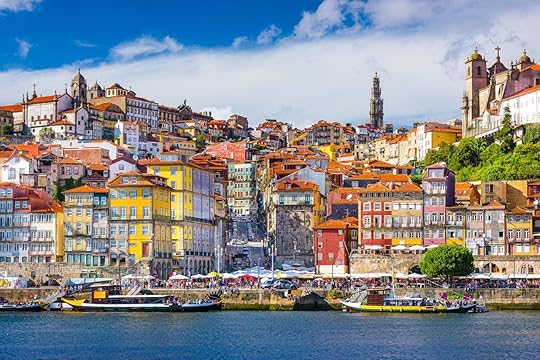
Photo: ESB Professional/Shutterstock
Both the Portuguese capital and second city are fantastic for solo travelers, but even the Lisboetas will tell you that the people of Porto are as friendly as they come. The beautiful city on the banks of the Douro River has a slightly calmer pace than Lisbon with the perfect mix of culture, nightlife, and cuisine to make any solo traveler feel at home.
English is pretty widely spoken, and younger locals are almost always up to chat, so getting around and meeting new people are a cinch. People watch over a glass of tawny port; chow down on a franceschina, a gut-busting local sandwich stuffed with meats, covered in melted cheese, and slathered in tomato-beer sauce; and take in the alleys adorned with street art. You’ll quickly see why Porto has been giving Lisbon a run for its euros.
For foodies: Évora

Photo: RossHelen/Shutterstock
Good grub is as hard to avoid in Portugal, from the succulent seafood down south to the heartier fare up north. Still, the Alentejo region stands out as the culinary superstar. Base yourself in warm, medieval Évora about an hour and a half east of Lisbon for a balance of great eats and sights to see between meals.
Pair local wine with marinated pork from acorn-fed pigs, the best of the national salt cod dish bacalhau, and olive oil worth smuggling home in your carry-on. Then walk it all off at Roman temple ruins in the UNESCO-listed city center or scare yourself hungry again at the bone chapel. You’ll be happy as a clam (also on the menu) if you can handle a good dose of garlic and have been searching for creamy European cheeses that can upstage brie.
For backpackers: Coimbra
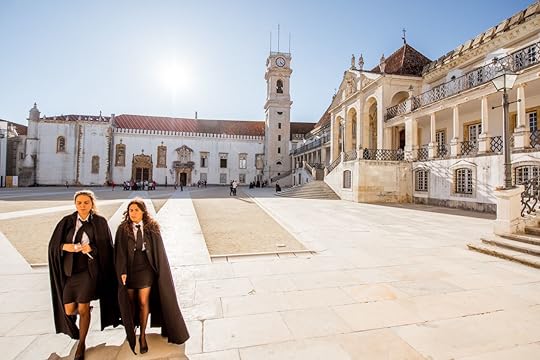
Photo: RossHelen/Shutterstock
Coimbra is Portugal’s most famous student city thanks to its university, the nation’s oldest and most distinguished. It’s less visited than Porto and Lisbon, so the prices haven’t been driven up as dramatically, and the lively city is especially energetic when school is in session. Budget travelers can choose between quietish nights soundtracked by Fado music or a bar scene that spills out into the streets until the early morning. Hostels blend in with historic sites, festivals are thrown throughout the year, and there’s an endless supply of casual, delicious dining guaranteed to keep both your stomach and wallet full.
For wine lovers: Douro Valley

Photo: silky/Shutterstock
Most think of Porto when they hear Douro, the city on the Douro River famous for its fortified port wine. But there’s a great big UNESCO-listed wine region, one of the world’s oldest, outside of Portugal’s second city, and it deserves a visit unto itself. Not just for lovers of sweet, dessert-like wines, the Douro Valley has been upping its table-wine game in recent years. Its terraced, well-manicured vineyards dotted with quintas, or estates, will make you blush, but that might just be the work of the tinta barroca grapes. It’s worth a few days of sampling the region’s ports and reds and driving its winding, mountain-cut roads — just not in that order.
For longer stays: Lisbon
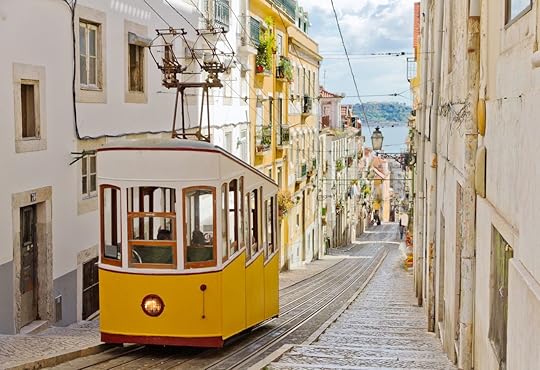
Photo: Martin Lehmann/Shutterstock
The worst thing about Lisbon is the overwhelming number of travelers it sees these days. The best thing is everything else. Many are so dazzled that they decide to stay awhile, so the Portuguese capital is a prime spot for digital nomads and other long-term travelers.
It has tons of coworking spaces; an abundance of central Airbnbs, albeit at a higher price point than a few years ago; and a laptop-friendly coffee-shop scene. Plus there’s everything from unstoppable nightlife in Bairro Alto and enduring Fado music in Alfama to nearby surf spots and killer petiscos (small bites similar to Spanish tapas, just don’t let the locals hear you make the comparison) to keep you busy. For a less touristy and more affordable experience, consider securing a spot in the South Bay, a quick 10-minute ferry across the Tagus.
For water sports: Peniche

Photo: homydesign/Shutterstock
Surfing is the big pastime in Peniche, a small fishing town with huge waves and reliable breaks halfway down the coast. Medão Grande Beach has some of the best surfing on the continent — some call its top wave, Supertubos, the “European Pipeline” — and hosts competitions like the MEO Rip Curl Pro Portugal every year. Windsurfing, kite surfing, and bodyboarding are equally popular in Peniche. A 30-minute boat ride away is the Berlengas Islands Nature Reserve where you’ll also find some decent diving, including wrecks and walls.
For the best nightlife: Albufeira or Portimão

Photo: Marcin Krzyzak/Shutterstock
Famous for its sunny beach days, much of the Algarve region in southern Portugal turns into a drinking and dancing hub after dark, popular with younger travelers looking to let off some steam spring-break style. Albufeira is a top choice for Brits on stag and hen dos, bachelor and bachelorette parties, which pretty much says it all. There’s a variety of accommodations for the rare, sleepy hours you’ll find yourself not sunbathing or dancing on tabletops at the club.
If you like late nights and good vibes but aren’t interested in mini Ibiza, opt for Portimão instead. Here, you’ll hunker down on the long, golden sands of the Praia da Rocha and Três Irmãos beaches, then get the right amount of rowdy at bar crawls and beach parties, more subdued nightclubs, or even casino visits. In either place, drinks are dangerously cheap.
For romantic getaways: Sintra or Aveiro
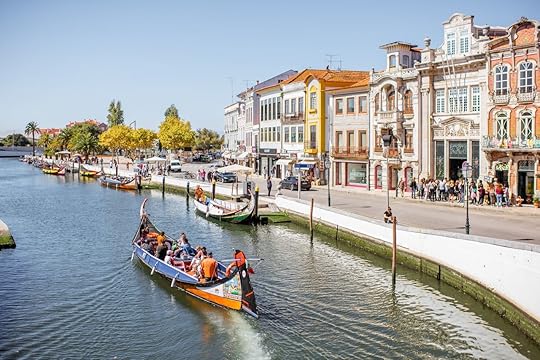
Photo: RossHelen/Shutterstock
Sintra is a storybook town a little under an hour outside of Lisbon, making it a perfect day trip or weekend away for visiting couples. It’s dripping with charm from the cozy city center to the vivid red and yellow Pena Palace, aptly featuring romanticist architecture. Fill your day (or days) with visits to the garden-filled Quinta da Regaleira palace grounds, hilltop Castelo dos Mouros, and Moorish National Palace of Sintra. Later, venture out into the forested Sintra Mountains and Cabo da Roca, the westernmost point on mainland Portugal. Before you leave, be sure to split a few sweet, cheese-filled queijada pastries from the Piriquita bakery in town.
Aveiro is a laid-back city about an hour south of Porto. It’s often referred to as the “Venice of Portugal” because of its canal system, though the iconic boats here are long, colorfully painted vessels called moliceiros. Fall as in love with the city center as you are with your partner, flitting between Art Nouveau houses and historic religious sites, and hit the beach anytime.
For peace, quiet, and culture: Gerês

Photo: ShutterPNPhotography/Shutterstock
Head north in Portugal for the chance to experience the country as it was before the tourist boom. Few travelers make it past Porto, so this scenic area filled with waterfalls, thermal springs, Roman ruins, and traditional villages on the Spanish border is ideal for a quiet, cultural retreat. What many locals refer to simply as Gerês is actually Peneda-Gerês National Park, the only national park in the country and a fantastic place to spend a few nights away from it all.
For family holidays: Tavira

Photo: Lux Blue/Shutterstock
Tavira is a resort in the Algarve but one that’s managed to cling to its small-town roots and keep party hungry tourists at bay. The sandy stretches and warm, calm waters of Praia do Barril have long drawn vacationing families from Portugal and neighboring Spain. In town, you’ll discover white Moorish architecture lining cobblestone streets and more churches than hotels. Still, finding a nice accommodation, most likely a villa or guest house, without breaking the bank is hardly a challenge.
For history buffs: Guimarães
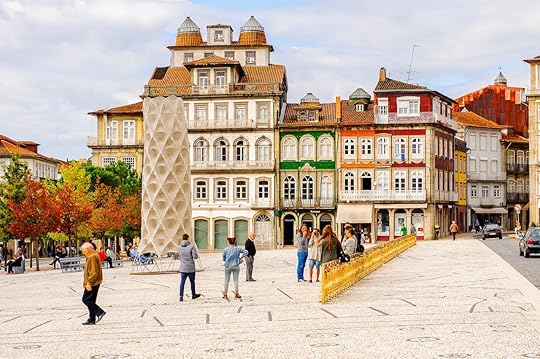
Photo: Anton_Ivanov/Shutterstock
Guimarães was the birthplace of the first king of Portugal and is considered by many to be the cradle of the entire country. Evidently UNESCO agrees, having named it a World Heritage site in 2001 for its role in developing the Portuguese identity as its earliest capital in the 12th century. The historic town is made up of well-preserved architecture adorned in characteristic azulejo tiles dating back to the 15th century, from monasteries to mansions.
It’s an easy trip from Porto to the city’s home district of Braga. Don’t miss the landmark Guimarães Castle, gothic Nossa Senhora da Oliveira church, and Alberto Sampaio museum when you aren’t enjoying the gentle bustle of central Largo da Oliveira square.
For nature escapes: Azores
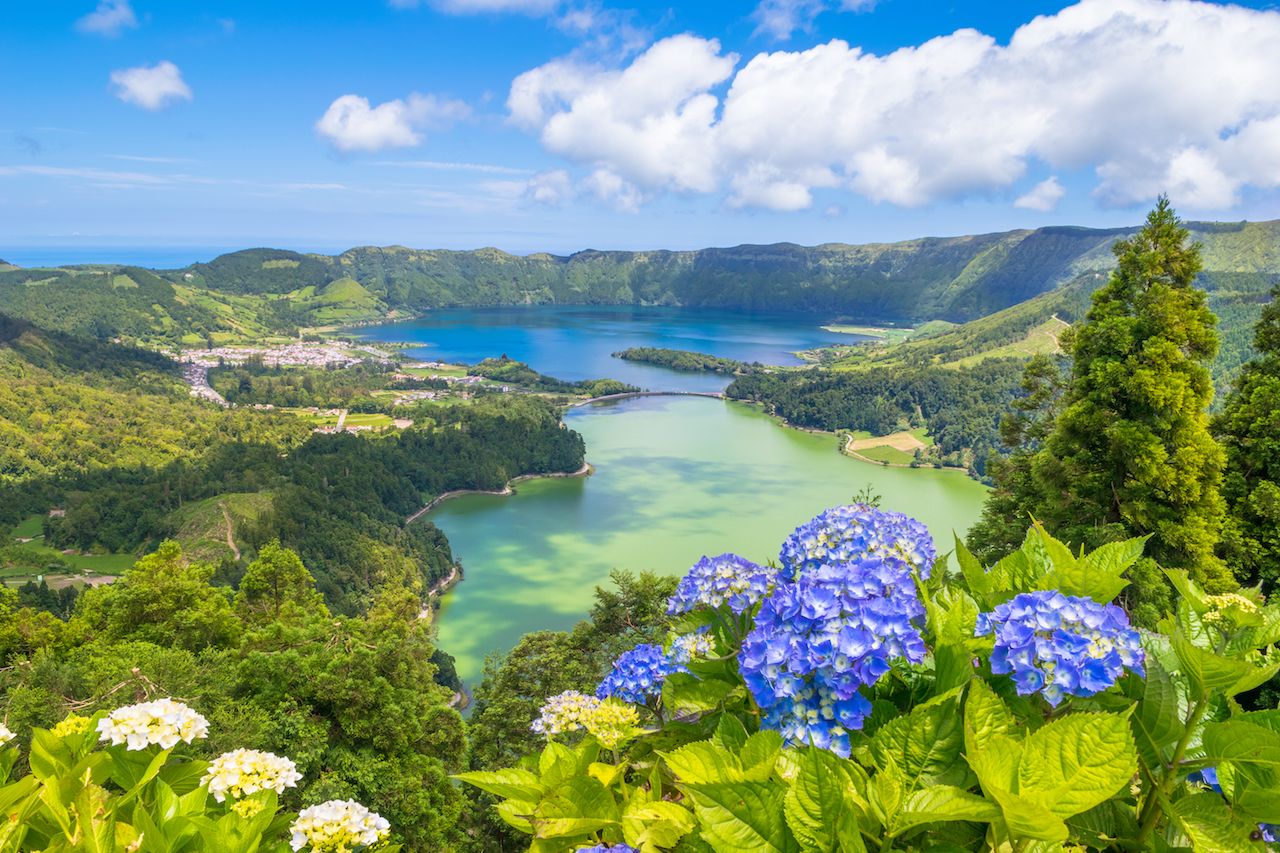
Photo: Nido Huebl/Shutterstock
Rapidly growing in popularity, the nine-island archipelago in the mid-Atlantic known as the Azores is a dream for outdoorsy types and suckers for luxuriant scenery. São Miguel is the largest, most-developed island with an impressive number of lagoons and crater lakes, volcanoes to hike, caves to explore, and waterfalls and hot springs to soak in no matter your preferred temperature. Runner-up for the most traveled island is a three-way tie between Terceira, Pico, and Faial with Flores coming in as the underrated underdog.
When you aren’t knee deep in the outdoors, witness cultural events like the annual Holy Ghost Festival or weekly running with the bulls depending on your island of choice. Keep your energy up with regional stews and smoked sausages or go light with freshly caught seafood like mackerel and octopus. Just remember to save room for the insanely sweet local desserts. 

More like this: 7 pastries worth traveling to Portugal for
The post The best place to go in Portugal for every type of traveler appeared first on Matador Network.

Rent a Finnish happiness guide

Envy directed at Scandinavia is nothing new. Whether it’s their progressive culture, technologically advanced infrastructure, or consistently high ranking on the world’s “happiest countries” list, this part of the world just seems to have it all figured out. But they’re not hiding the secrets behind their success — at least, not when it comes to their happiness. Finland, the happiest country in the world, is trying to export its happiness around the globe by allowing people to “rent a Finn.” The best way to learn, after all, is through hands-on experience, and this project is giving you the chance to travel to Finland and spend some time with some Finnish “happiness guides” in the hopes that their relaxed, nature-driven way of life might rub off on you.
Eight Finns have signed up to host visitors in their respective towns across Finland. Esko, for example, is the mayor of Rovaniemi in Finnish Lapland, and he wants to share the joys of Finnish summer with his visitors at his cottage. These include berry-picking, grilling, boating, and playing mölkky, a Finnish game.
For a rather different experience, you can also stay with Linda and Niko, a couple living in Utö, the southernmost island in the Finnish archipelago. According to their bio, guests will be “introduced to the simplicity of Archipelago life, surrounded by friendly, caring people and harsh, beautiful nature.” You can also expect to join them on a sailing trip, and even go camping on a nearby islet.
Applying to “Rent a Finn” is easy. Just film a three-minute video where you describe yourself, your connection to nature, and your goals for visiting Finland, and fill out the application form on the website. Winners will travel to Finland this summer for three days, with dates varying by host. All travel and accommodation expenses will be covered, but keep in mind that you will be filmed throughout your visit.
To first determine whether or not you’re in dire need of a relaxing getaway to Finland, be sure to take their balance test. 

More like this: These are the happiest countries on earth, according to science
The post You can now “rent a Finn” who will teach you the secret to being happy appeared first on Matador Network.

Air travel linked to measles

Getting the proper vaccinations before a trip is extremely important, but it’s not only yellow fever, typhoid, cholera, and the like that travelers should be worried about — measles are making a comeback in the US and there’s already been 268 cases there in 2019 alone.
If you don’t have an MMR (measles-mumps-rubella) proof of vaccination in your health records, make sure you talk to your family physician and get vaccinated before you travel internationally, domestically, or even walk around airports. According to the Center for Disease Control and Prevention (CDC), all six measles outbreaks in the US so far in 2019 have been linked to people carrying measles from foreign countries such as Israel and Ukraine where there are large outbreaks of the disease.
Measles is a highly contagious viral infection that can spread to between nine and 19 people who are not immunized, and airports and airplanes are an easy place for them to spread. The New York Times explains, “Unlike the influenza pathogens, which spread when a person sneezes or coughs but then fall, the measles virus remains suspended in air […] allowing the pathogens to linger and float for up to two hours.”
And you don’t have to be sitting directly near someone on a plane to catch the disease, either. Back in 2014, a child connecting on a flight from India passed measles to a man at a Chicago airport, even though they didn’t even fly on the same plane — they only used the same domestic gate.
Measles is a very serious virus that can be lethal or lead to very severe and long-term complications, especially in children. 
H/T: The New York Times

More like this: These are the travel vaccines you actually need, according to an expedition doctor
The post Measles outbreak in the US directly linked to air travel appeared first on Matador Network.

March 15, 2019
American stops flying to Venezuela

Amid the civil unrest taking place in Venezuela, American Airlines is joining other major US airlines in suspending service to the country. Normally, the airline flies twice daily between Caracas and Miami, and once between Maracaibo and Miami. The decision came after the Allied Pilots Association (APA), a union group for American Airlines Pilots, began urging its pilots to refuse trips to the country following a travel advisory issued by the US State Department. The advisory warned of “violent crime, such as homicide, armed robbery, kidnapping, and carjacking” and added that the US Embassy in Caracas has withdrawn its diplomats from the country.
In a statement to Fox News, American Airlines said, “Our corporate security team has a collaborative partnership with all of our union leaders, and we will continue to do so to evaluate the situation in Venezuela. The safety and security of our team members and customers is always number one, and American will not operate to countries we don’t consider safe.”
The country’s most recent troubles started in January, when Juan Guaido, head of Venezuela’s opposition-controlled congress, claimed Nicolás Maduro’s 2018 re-election to be illegitimate and invoked the constitution to install himself as interim president. The result has been a violent conflict between those who believe Maduro is the rightful president and those who think the position belongs to Guaido.
American Airlines is one of the last major US airlines to restrict service to Venezuela. Delta and United both did so back in 2017. 
H/T: Reuters

More like this: How to stay safe on the road: Forget terrorism, worry about faulty brakes.
The post American Airlines joins others in suspending service to Venezuela appeared first on Matador Network.

Best places to travel in May

We’ve finally reached the light at the end of the winter tunnel. Daylight savings is over and the sun is shining, and all is right with the world. No? Still not in full-on summer mode yet? Well, that’s ok — May is a mere two months away, bringing with it the unofficial start of summer at Memorial Day. It also brings music festivals, barbecue festivals, and even a camel-riding festival. Plus Cinco de Mayo and the general relief that we don’t have to think about winter again until football is back. So if you’re dreaming of where to go to experience it all, here are our picks for the best places to go in May.
Louisville, Kentucky

Photo: Thomas Kelley/Shutterstock
You don’t need to know a thoroughbred from a loaf of bread to have the weekend of your life at the Kentucky Derby. The first leg of horse racing’s triple crown goes off on May 4, which is pretty cool considering we’ve seen two horses take the triple crown in the last five years. That mean nothing to you? Cool. There’s still an insane party on the infield at Churchill Downs that’s like a better-dressed spring break. And you’ve probably got a decent shot at winning money by betting on the prettiest horse.
Louisville has plenty to do even if you can’t get into the Derby. The last season of Top Chef was shot in Kentucky, so you can peruse the episodes and pick which of the chefs you want to visit. You can also spend the day in the Wonka Land of Whiskey at the Evan Williams Experience. Or visit one of these other fantastic distilleries not on the Bourbon Trail.
British Columbia, Canada

Photo: TRphotos/Shutterstock
From skiing and biking to wine and swine, May is hands down the best month of the year to visit beautiful British Columbia. Up in Whistler, there’ll still be enough snow on the mountains to hit the slopes that hosted the 2010 Olympics. After crushing powder all morning, you can jump on a bicycle and play around the Whistler Mountain Bike Park. Then fuel up for it all again during It’s a Spring Thing, Whistler’s version of restaurant week when eateries offer special prix-fixe menus all month.
If you’d rather consume calories than burn them, BC’s wine country has you covered. Head to the Okanagan Valley from May 1 to 12 for the annual Spring Okanagan Wine Festival. It features over 100 events and two grand tastings, all set in the most underrated wine scenery in North America. On May 4, you can roll over to Oliver Osoyoos for the eighth-annual Pig Out Festival, where chefs from all over the region will be grilling all sorts of hog to pair with your vino.
Cabo San Lucas, Mexico
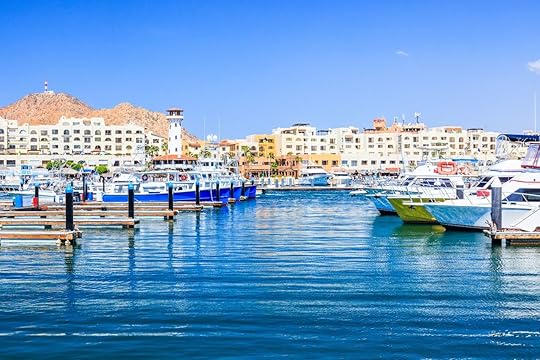
Photo: emperorcosar/Shutterstock
The last straggling college kids have abandoned Cabo, replaced by surfers who know May is when to find the best waves of the year. The holiday masses are gone, and the city hasn’t yet reached storm season, which means ho-dads have their best shot at getting good waves to themselves. Even if you can stand on a surfboard for about as long as you can ride a bull, the beaches will be emptier, and the sunny weather will be ideal.
As the Cabo-Wabo crowd has thinned, the city gets a little more sophisticated too. Every Thursday, you’ll find the art galleries in the historic district open until 9:00 PM for Cabo’s weekly art walk, and three days a week you can peruse a local farmers’ market if you want to try making guacamole at home.
Gulf Shores, Alabama

Photo: Hangout Music Festival/Facebook
The clear white sands of the Gulf Shores aren’t just the best spot for spring break in Alabama. They’re also the best place to experience beach parties all summer, which kick off at the Hangout Music Festival from May 17 to 19. The festival is right on the ocean, so you can watch acts like Diplo, Cardi B, and Vampire Weekend from the waters of the Gulf of Mexico. The crowd is one of the most diverse of any festival, and being all ages, it won’t make anyone who’s graduated college feel old.
That’s a good thing because the parties outside the festival are as much a draw as Hangout itself. The acts don’t start until early afternoon, which means you’ll have plenty of time to roll down from your beachfront condo and play beer pong on the beach before heading in. After the music stops, those condo towers come alive with parties that can last until sunrise. But as long as you’ve got blackout shades, you won’t need to worry about waking up
Cannes, France, and Monaco
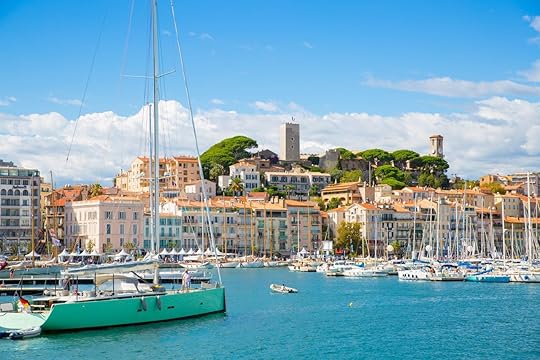
Photo: IR Stone/Shutterstock
Just saying you’re going to the South of France will probably lose you followers on Instagram, but who needs them when you’re rubbing elbows with the beautiful people at the Cannes Film Festival? The festival runs from May 14 to 25, and while we won’t know the full lineup until April, you’re not really going for the movies anyway. You’re going for the celeb-spotting and phenomenal meals at spots like Fouquet’s Cannes at Hotel Barrière Le Majestic. Just be forewarned, the beaches can be a little rocky.
Once you’re done being your bougiest self, take it up a notch over in Monaco at the annual Monaco Grand Prix from the 23rd to the 26th. It’s about as opposite from a NASCAR race as one can get, where spectators literally watch from yachts and multi-million-dollar apartments. And yes, Monaco might be the most expensive place in Europe, but it won’t cost you anything but the price of beer to post up at Brasserie de Monaco and enjoy the race from the finish line. Or get into the action yourself at the Hotel Metropole Monte-Carlo’s “You are the Driver” experience. Here you’ll take a day of training in a real F1 car, then try your skills on a track in Provence.
Botswana

Photo: Radek Borovka/Shutterstock
Botswana might be the top destination in Africa for spotting elephants, and May’s beginning of the dry season is the best time to head there on safari. You’ll find prime pachyderm peeping in the northern part of the country, where elephants congregate near the Sayute Channel during less-rainy months. You can also head to Chobe National Park, where in addition to full herds of elephants you’ll likely see antelopes and countless bird species. With 40 percent of the country preserved for wildlife, and a government that’s been stable for over 50 years, Botswana is an under-the-radar African destination that shines in early summer.
Naples, Italy
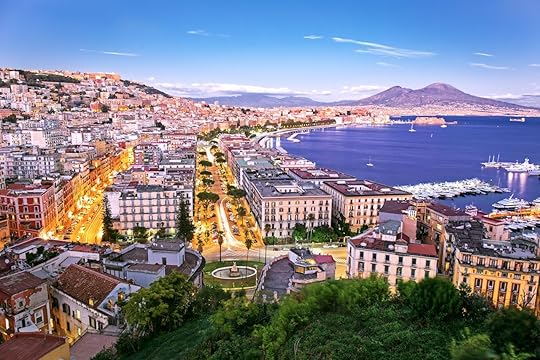
Photo: Mariya Golovianko/Shutterstock
Italians will tell you Naples is the New Jersey of Italy, which we can only take to mean that May kicks off the absolute best time of year to go there. It also makes sense that the only nonstop from the US to Naples would leave from New Jersey, as United Airlines begins new daily service from Newark to Naples starting May 22. Once there you can visit Mount Vesuvius, as long as you promise not to audibly play that Bastille song when you get to the top. You can also try the famous Neapolitan cuisine in Southern Italy’s largest city, or hop over to the Amalfi Coast to get your fix of the Med.
May is also Maggio dei Monumenti — May of the Monuments — in Naples, where you’ll experience a month-long, city-wide cultural festival dedicated to celebrating Naples’ art and architecture. Make sure to visit the monuments and view the art collections that usually aren’t open to the public, and enjoy free concerts in local historic venues.
Memphis, Tennessee

Photo: Memphis in May International Festival/Facebook
If you’ve heard rumblings about Memphis making a comeback, there’s no better month to get out and see it than May, when downtown hosts the massive Memphis in May festival. The event — which used to be limited to one weekend — now lets you get a little piece of Memphis’s best all month, kicking off with the Beale Street Music Festival from May 3 to 5. This year’s headliners include Dave Matthews Band, The Killers, One Republic, and Chvrches.
You can also opt to visit May 15-18, when barbecue smoke fills the city during the annual World Championship Barbecue Competition. Over 250 teams from around the world descend on the bluffs above the Mississippi River, grilling up savory meats that can literally be smelt for miles. You won’t be able to sample it unless you’re on a team, but the excitement it brings to downtown makes it the best weekend of the year.
Vienna, Austria, and Prague, Czech Republic
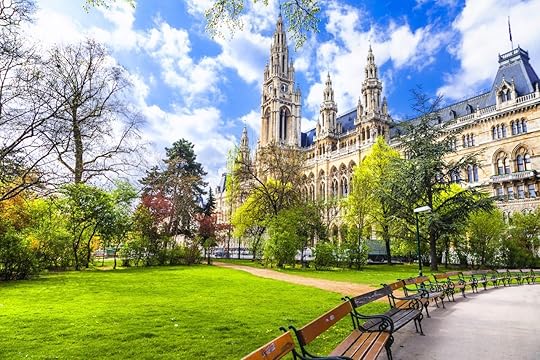
Photo: leoks/Shutterstock
These two Central European gems sit just over three hours apart by car, and if you’re going to cross the Atlantic in May, you may as well hit them both. The annual Vienna Festival begins May 10, drawing 430 artists, dancers, musicians, and performers to 27 venues throughout the city. If you’re more into the kind of art you can eat, hit the Genuss Festival May 10-12, with 90 stalls slinging sourdough bread, Viennese potato goulash, cheese Knöpfle and sweet poppy-seed gnocchi.
Over in Prague, the annual May beer festival has sadly been canceled, but in one of Europe’s cheapest capitals, you can still cruise the urban gardens and beer halls, enjoying $2 drinks as you bask in the European sunshine. If you’d like somebody to plan the whole thing for you, Intrepid Travel offers a nine-day Highlights of Central Europe trip that also includes stops in Budapest and Cesky Krumlov, starting at about $1,800.
Cayman Islands

Photo: Exclusive Aerials/Shutterstock
Yes, Carnival is still going on in the Caribbean this time of year, at least if you’re in Grand Cayman. Batabano is one of the longest Carnival parades in the Caribbean, where scantily clad “jumpers” bump and grind their way along the road by Seven Mile Beach for the better part of May 4. You’ll find flowing rum punch, elaborate costumes, and more soca music than you’ve heard in your life, during days when locals take a break from reality.
But it’s not all parades and pandemonium. You’ll also find an all-day food festival on Cardinal Avenue in Georgetown. And an organized day of boating Sunday, so you can sleep off your hangover in the sun. You can still hit up Stingray City while you’re there too, the absolute closest and safest experience you’ll ever have with a stingray the size of a giant pizza.
Santa Barbara, California

Photo: randy andy/Shutterstock
Santa Barbara could be on this list every month, a town that embodies all of the perfect weather of Southern California with all the Pacific charm of the Central Coast. But in May you’ll have the best chance to experience Santa Barbara wine country when the Santa Barbara Vintner’s Festival begins on May 4. Here the very people who make SoCal’s best wines take to the pouring stations and explain their creations with all the expert knowledge and passion their blends deserve. Far better than most festivals, where at best you’ll talk to a brand manager.
The festival is held at the scenic Rancho Sisquoc Winery in the Santa Maria Valley, culminating with a grand tasting of over 70 wines, many poured for the first time. It’ll also include samples from local restaurants, wine demos, and lessons on how all the stuff you drank got made.
Western Australia

Photo: ronnybas frimages/Shutterstock
Vacationers don’t typically make it out to Australia’s left coast, but May might be the one time of the year it’s worth hitting before Melbourne, Sydney, and the Great Barrier Reef. For divers, you’ll have the chance to swim with dozens of whale sharks when they travel en masse to the Ningaloo Reef. The nearby town of Exmouth even has an annual Whale Shark Festival from the 24th to the 27th to commemorate the occasion.
Above the water, the town of Toodyay has its annual Moondyne festival on the 5th, sort of an Aussie take on Frontier Days. And if you feel like venturing into the middle of the country, you can stop into Ayers Rock. It’s now illegal to climb, but it’s still home to the Uluru Camel Cup on the 24th, the world’s only three-day festival devoted to camel racing. 

More like this: The best spring break destination in every state
The post The best places to travel to this May appeared first on Matador Network.

Where to eat at London Heathrow

London’s Heathrow International Airport is built for the hungry. Heathrow’s restaurants range from classy to quick to pub. Heavy emphasis on “pub.” Like London itself, you can find pubs with traditional English bar food and beer everywhere you look in Heathrow. Which is fine and dandy, but there are also a number of high-end restaurants with fast or slow service if you’re looking for something a little different.
These are the best restaurants and bars in every terminal of Heathrow International Airport.
Terminal 2

Photo: Heathrow Airport/Facebook
The Perfectionist’s Cafe: Snag one last British meal here before flying out. The food is tasty and comes out fast (there’s a grab and go option if you need it really fast) for when you don’t have long before your flight. Options include dishes like Scotch eggs made with quail eggs along with the salads, burgers, and fish and chips you’ll find all over Heathrow. Don’t sleep on the cocktail menu.
London’s Pride by Fuller’s: Drink in some classic English beers from the airport outpost of this historic brewery. There’s a special airport beer, Wingman, made special for this location, and there’s a full pub menu for eats.
Wondertree: The English diet is pretty heavy on the meats. Wondertree’s menu has clearly marked vegetarian dishes along with a solid cocktail, wine, and beer list. Meat eaters will enjoy as well with options like chorizo flatbreads, red snapper, and rump steak and chips.
The Gorgeous Kitchen: Escape the doldrums of airport life in The Gorgeous Kitchen. The sit-down restaurant has lots of open space and, dare we say it, gorgeous design. The menu rotates to include seasonal ingredients, and most dishes are on the fresh and light side.
Terminal 3

Photo: Heathrow/Shutterstock
Spuntino: A mix of Italy and Prohibition-era America with burgers, pizza, and classic cocktails with blues playing in the background. The hosts rollerskate over to you, and Spuntino is about as Instagram-friendly as an airport restaurant gets with murals and neon lights.
Oriel Grande Brasserie: Art Deco decor and classic French dishes. A long list of cocktails, beer, and wine (glass and bottle) pairs with lobster dishes, filling feasts like ribeye steak, and upscale comfort food like truffle mac ‘n’ cheese.
The Curator: Where to go when you want a good cocktail to send you off. The Curator’s menu is filled with craft cocktails and a well-curated wine and beer list.
The Darwin: One last true British pub experience before you travel to wherever you’re going, which will surely have a cliche remake of a British pub.
Terminal 4

Photo: Comptoir Libanais/Facebook
Comptoir Libanais: Lebanese home cooking with flatbreads and desserts. Come with a group, as most things here are for sharing. Don’t forget the mint tea.
Prince of Wales: An upscale pub with classics like chicken, ham, and leek pie, toasties, and burgers. Cocktails, beer, and a warm atmosphere make this a comforting place to relax before flying.
Terminal 5

Photo: Heathrow Airport/Facebook
Fortnum & Mason: Just because you’re in an airport doesn’t mean you can’t have a fancy meal when you want one. Fortnum & Mason opens early with big breakfasts and service of indulgent lunches and dinners like salad with lobster, smoked fish platters, and seasonal British oysters. Classy wine and spirits match the food.
Gordon Ramsay’s Plane Food: Another opportunity to eat at a higher end place (at least as far as airport dining goes). Full breakfast, lunch, and dinner menus are available as well as a-la-carte ordering. The menu touches on just about everything, with options like udon noodles, a raw bar, and short rib beef burgers.
The George: British pub with pizzas, burgers, and big British breakfasts. It’s a simple pub, don’t make a fuss about it, but you’ll enjoy yourself just fine. 

More like this: What do to with a day in London
The post Where to eat and drink at London’s Heathrow International Airport appeared first on Matador Network.

Historical lesbian destinations

Due to the vast majority of LGBTQ historical records and writings focusing on the relationships between gay men, there isn’t much about the history of lesbianism in the more distant past. However, just in the past three centuries, along with the emergence of feminism and women’s rights, came the need to bring the lesbian voice into the mainstream. The easiest way to pay homage to the lesbian culture that helped shape history as you know it? Simply pay a visit to one of the many destinations and sites that bear significance to lesbians all around the world.
In order to document this progression, cities around the world have begun to declare historic sites like the former home of Virginia Woolf and the Furies Collective national landmarks. Additionally, organizations around the world like the Lesbian Herstory Archives have been created to recognize the important stories of lesbians from the past and present. So, in order to brush up on your history of civil rights, activism, and exposure as it pertains to lesbianism — and add a few destinations to your bucket list — we’ve collected the most prolific lesbian landmarks on the planet you need to visit.
1. Colette’s Childhood Home, Joigny, France
Considered to be one of the most prolific lesbian authors of all time, Colette was a French phenomenon that penned a number of classics throughout the early part of the 20th-century. Nestled away, less than two hour’s drive from Paris, the small and idyllic village of Saint-Sauveur-en-Puisaye witnessed the author in her earliest years. In 1873, Colette was born and raised within the walls of this humble home — and now, decades later, the property is open to the public and restored to reflect what it would have looked like when the author wrote her first memories of its warm charms.
2. The Lesbian Herstory Archives, New York, New York

Photo: Lesbian Herstory Archives/Facebook
In 1974, founders Joan Nestle, Deborah Edel, Sahli Cavallo, Pamela Oline, and Julia Stanley decided that something should be done to preserve lesbian history. Eventually this desire to keep lesbian stories safe blossomed into a full-scale project, called The Lesbian Herstory Archives, now based in Park Slope. Decades later, the archives contain some 11,000 books and 1,300 periodical titles, as well as a number of artifacts and unknown photographs.
3. The Furies Collective, Washington, DC
Established in 1971 in Washington DC, the Furies Collective was a communal lesbian group that worked tirelessly to give a voice to the lesbian population. They did so by publishing their newspaper, The Furies, that focused on all the issues that affected the lesbian community while also giving a voice to those so often silent in their views. While their newspaper was short-lived, its influence is still felt — even so that in 2016, the house that the Furies Collective conducted their business in became the first lesbian-related historic landmark in Washington DC.
4. Shibden Hall, West Yorkshire, England

Photo: Shibden Hall/Facebook
This Medieval home in West Yorkshire, England, was once owned by Anne Lister, a wealthy heiress and lesbian who became famous for writing an extensive diary detailing her queer life in the early part of the 19th century. For this and her freedom to act as any man of that time would have acted, Lister is known as the first “modern lesbian” — completely open about her sexuality and desire to live her life in a more masculine fashion. Now, the hall contains a series of restored workshops, a brewery, and a museum.
5. The Alice Austen House, Staten Island, New York

Photo: Alice Austen House Museum/Shutterstock
Also known as Clear Comfort, this was the home of Alice Austen, an early-20th-century Staten Island-based photographer who captured compelling images of both the middle and lower class families of the area. For much of this time, she lived in Clear Comfort with her partner, Gertrude Amelia Tate, until her financial instability forced her to move from the home. Now, the Alice Austen House is a national landmark, museum, and member of the Historic House Trust.
6. Natalie Clifford Barney Historic Marker, Dayton, Ohio
Though you may have never heard of Natalie Clifford Barney, it might be time to acquaint yourself with this legendary lesbian. Born in Dayton, Ohio, in 1876, Clifford Barney eventually became a celebrated playwright, poet, and novelist. During her tenure as a writer and socialite in France, she was completely open about her sexuality, stating that her work published with explicit scenes of lesbian romanticism worked to keep the male suitors at bay. Simultaneously serving as one of the leading figures in French literature, along with American and British Modernists of the Lost Generation, and building up fellow female writers of that time, Clifford Barney has well deserved her historic marker, located in downtown Dayton, Ohio.
7. Monk’s House, East Sussex, England

Photo: Monk’s House NT/Facebook
Known for being open-minded about sexuality, famed author Virginia Woolf penned one of the most famous examples of lesbian-themed narratives with her prolific Orlando. For a large portion of her life, Woolf lived in Monk’s House with her husband, Leonard Woolf, in East Sussex, England. During their time in the home, it saw a number of accomplished guests like T. S. Eliot, E. M. Forster, Roger Fry, and Lytton Strachey. Now, the home is open to visitors who want to catch a rare glimpse of the writer’s life.
8. Penny Campbell Historical Marker, Nashville, Tennessee
At least for the city of Nashville, Tennessee, Penny Campbell is a big deal. Throughout the latter part of the 20th century and early part of the 21st century, Campbell made it her mission to bring LGBTQ equality to the city of Nashville and her home state of Tennessee, eventually, on her own, winning a case against the state’s sodomy statute banning same-sex relations. Aside from that landmark win, Campbell also organized Tennessee’s version of the Lesbians and Gay Rights March in 1987, as well as the first LGBTQ pride parades in Nashville. To honor her, visitors can visit the historical marker set outside of her former home in Nashville.
9. Gloria Casarez Mural, Philadelphia, Pennsylvania

Photo: Mural Arts Philadelphia/Facebook
Gloria Casarez is considered a hero for championing LGBTQ rights in Philadelphia. Among her long list of accomplishments, Casarez served as the City of Philadelphia’s first director of LGBT affairs, was the founding member of the Philly Dyke March, and the frequent activist for marginalized communities. And, while she was serving as the first director of LGBT affairs in Philadelphia, she spearheaded a project that eventually gave the city the broadest LGBTQ rights protections in the nation, which inevitably led the city to be ranked as the number one city nationwide for LGBTQ equality. Now, those who wish to revel in her legacy can pay a visit to the mural created to honor her dedication to the LGBTQ cause in the City of Brotherly Love. For more information check our Mural Art Philadephia who also run city tours.
10. Audre Lorde’s House, Staten Island, New York
As a writer, feminist, womanist, librarian, lesbian, and civil rights activist, Audre Lorde, throughout the latter part of the 20th century, brought attention to the world of queer people of color with prolific prose, poetry, and activism. Throughout her lifetime, Lorde spoke eloquently of issues related to civil rights, feminism, lesbianism, and the exploration of black female identity. Her home in Staten Island, in which she lived in for over a decade, is now a New York City LGBT historic site.
11. Cubbyhole, New York, New York

Photo: Cubbyhole bar NYC/Facebook
Since 1994, Cubbyhole has been a lesbian haven in New York City for cheap drinks and stimulating conversation. To this day, while it operates as a safe place for everyone, Cubbyhole has managed to become a favorite among lesbians in New York City. So, it should go without saying that, if you’re in the area, a trip to Cubbyhole is well worth the tight spaces and trek to Greenwich Village. 

More like this: The 15 most important LGBTQ landmarks in the US
The post 11 must-see lesbian historical destinations appeared first on Matador Network.

Matador Network's Blog
- Matador Network's profile
- 6 followers



